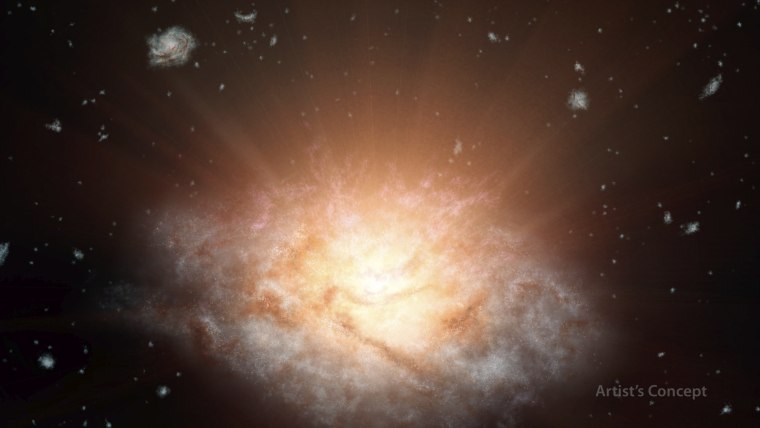NASA researchers have identified the brightest galaxy ever encountered, which shines in the infrared wavelength with the equivalent light of 300 trillion suns.
The "extremely luminous infrared galaxy," or ELIRG, was encountered in data from 2010's Wide-field Infrared Survey Explorer. The WISE space telescope has revealed a number of strange and unique galaxies. This one, the astronomers theorize, may have a supermassive black hole at the center, which draws immense amounts of gas and matter into itself and releases a veritable rainbow of electromagnetic energy.
The energy is blocked by thick a halo of dust, which absorbs it and heats up, emitting infrared light instead — and in unprecedented amounts.

What's more, this particular galaxy is so far away that the light we're receiving on Earth was given off about 12.5 billion years ago. That means it grew that large and that bright during the infancy of the universe itself. To the researchers, that suggests that the black hole forming the center of the galaxy is breaking the rules somehow. For example, it may have started out bigger than any others we've encountered,.
"Another way for a black hole to grow this big is for it to have gone on a sustained binge, consuming food faster than typically thought possible," the University of Leicester's Andrew Blain, co-author of the report describing the galaxy, said in a NASA news release.
"It's like winning a hot-dog-eating contest lasting hundreds of millions of years." (The term hot DOGs does appear in the paper, but in reference to "hot dust-obscured galaxies" like this one.)
Understanding the galaxy's formation will help shed light on the early history of the universe and set a precedent for studying similar objects. The report appears in the May 22 issue of The Astrophysical Journal, and can be read on the ArXiv preprint server.
IN-DEPTH
- Scientists Map Halo of Gas Around Andromeda Galaxy
- Dead Galaxies Perished by 'Strangulation,' Astronomers Find
- Crashing Galaxies Shed New Light on Dark Matter Mystery
